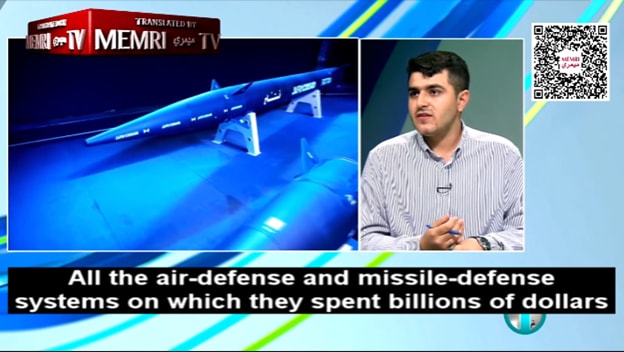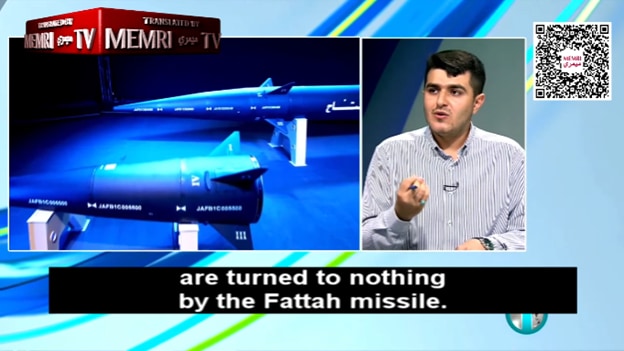
On June 6, 2023, IRINN TV (Iran) aired a report about the unveiling of Iran's new "Fattah" hypersonic missile. The report featured simulations of the missile's operations, and it claimed that it is a Fateh-class missile that can be remotely guided and that can travel inside and outside the atmosphere at a velocity of 16,000 kph. The report also said that the missile is highly maneuverable and can easily penetrate and target air-defense systems so Iranian Ballistic missiles could reach their enemy targets. Iranian President Ebrahim Raisi said that this is a message that the Islamic Republic of Iran is a strong country that defends the people of the region and the oppressed people of the world.
Reporter: "This is the unveiling of the Fattah hypersonic missile, which can maneuver inside and outside the atmosphere, at the speed of 16,000 kilometers per hour. IRGC Aerospace Force commander [General Amir-Ali Hajizadeh] expanded on the features of the Fattah missile, and said that this missile has an active nozzle, and can receive commands and maneuver on its way to the target at any time."
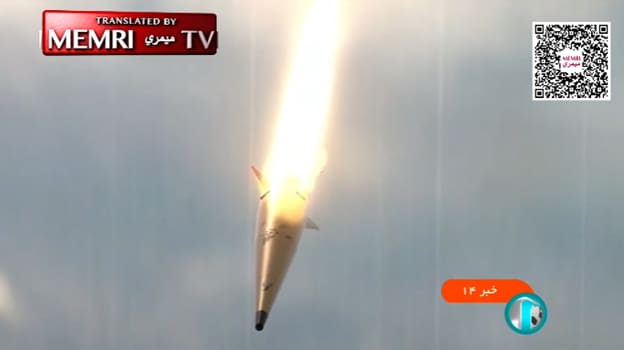
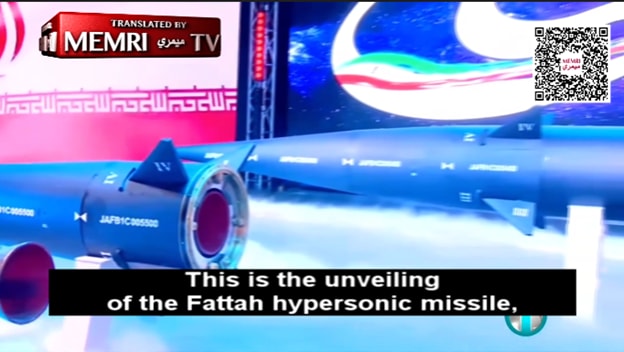


General Amir-Ali Hajizadeh: "The advantage of this system lies in its active nozzle. This means that we can control the thrust vectoring at any moment, and send it commands to move in different directions. When this is done, the missile can move above the atmosphere, left and right, up and down, in rotary motion, or in a combination [of different movements]. From a distance of 1,400 kilometers, we can accurately hit, with the help of God, any target we set our eyes on."


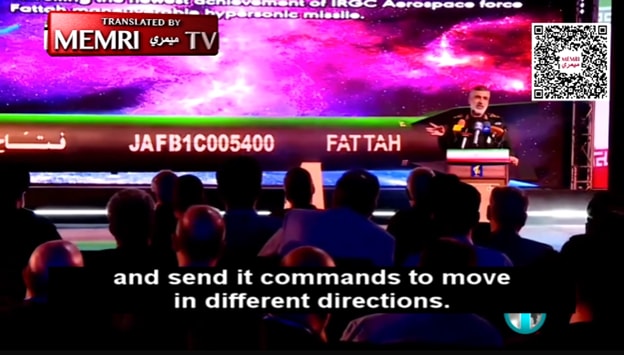
Iranian President Ebrahim Raisi: "Our message is that the Islamic Republic is a strong country, and its power serves to defend the Iranian people, the people of the region, and the oppressed across the world. "
[...]
Younes Shadloo: "We may say that this is the most important defensive-strategic achievement of the Islamic Republic of Iran, because our ballistic defense systems – and our ballistic missiles – go through an almost fixed course from launch and until they hit the target. The ballistic missiles of the Islamic Republic of Iran are equipped with winglets that help them hit the target with accuracy.




"In Fateh-class missiles – to which the Fattah missile also belongs – the accuracy is such that they can hit the center of a tire. The point is that this fixed course makes it identifiable to air-defense systems. If the Islamic Republic wants to respond to a possible attack on its soil, some of our launched [missiles] might be destroyed by air-defense systems like SM-6, Patriot, David Sling, Arrow, and Barak. However, a large number of our missiles will definitely penetrate these systems."
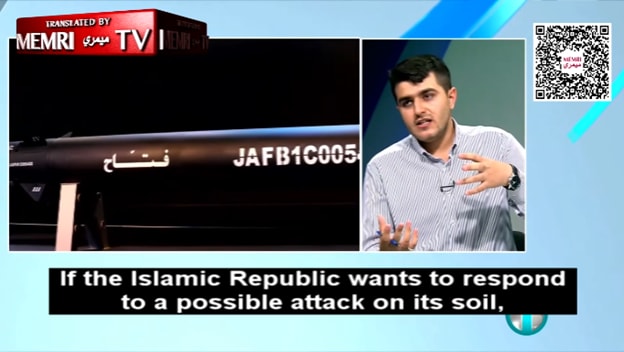

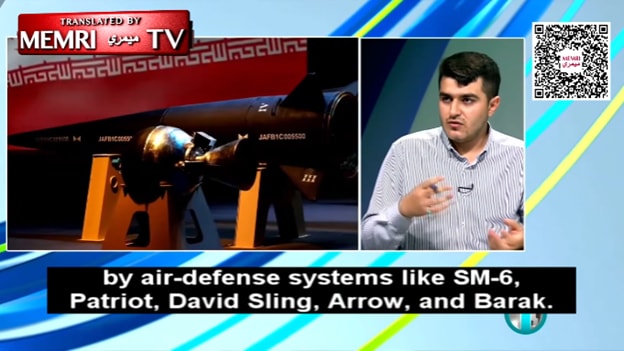
"But what can you do in order to make even this small percentage disappear? You unveil the Fattah missile. This is a missile whose warhead can be guided at any moment. Both the guiding winglets and the engine's emissions help it maneuver at 15 times the speed of sound. Instead of the missile going through a fixed course, it will take a compound course before hitting the target. This makes it impossible for the air-defense radar to identify where to intercept the missile. Even if the air-defense system fires interceptors, this missile can easily maneuver and bypass these interceptors. It generates large expenses and confusion in the enemy's air defense.



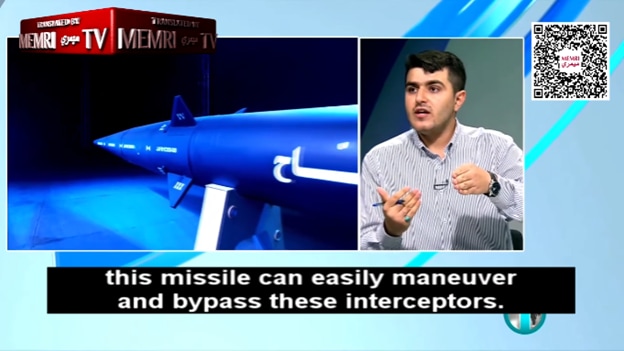
"The main purpose in the design of this missile is to hit those very air-defense systems, so that our strategic missiles can easily reach their targets. All this will happen if there is an aggression against Iran's territory."




"This missile uses solid fuel. It is a tactical missile and because it uses solid fuel it can be stored in arsenals and in missile cities. It can be ready for launch in the shortest time. Our ballistic strategic missiles, like Ghiam and Ghadr, use liquid fuel and their fueling process requires time. However, no air-defense system can escape this missile. All the air-defense and missile-defense systems on which they spent billions of dollars, are turned to nothing by the Fattah missile."
